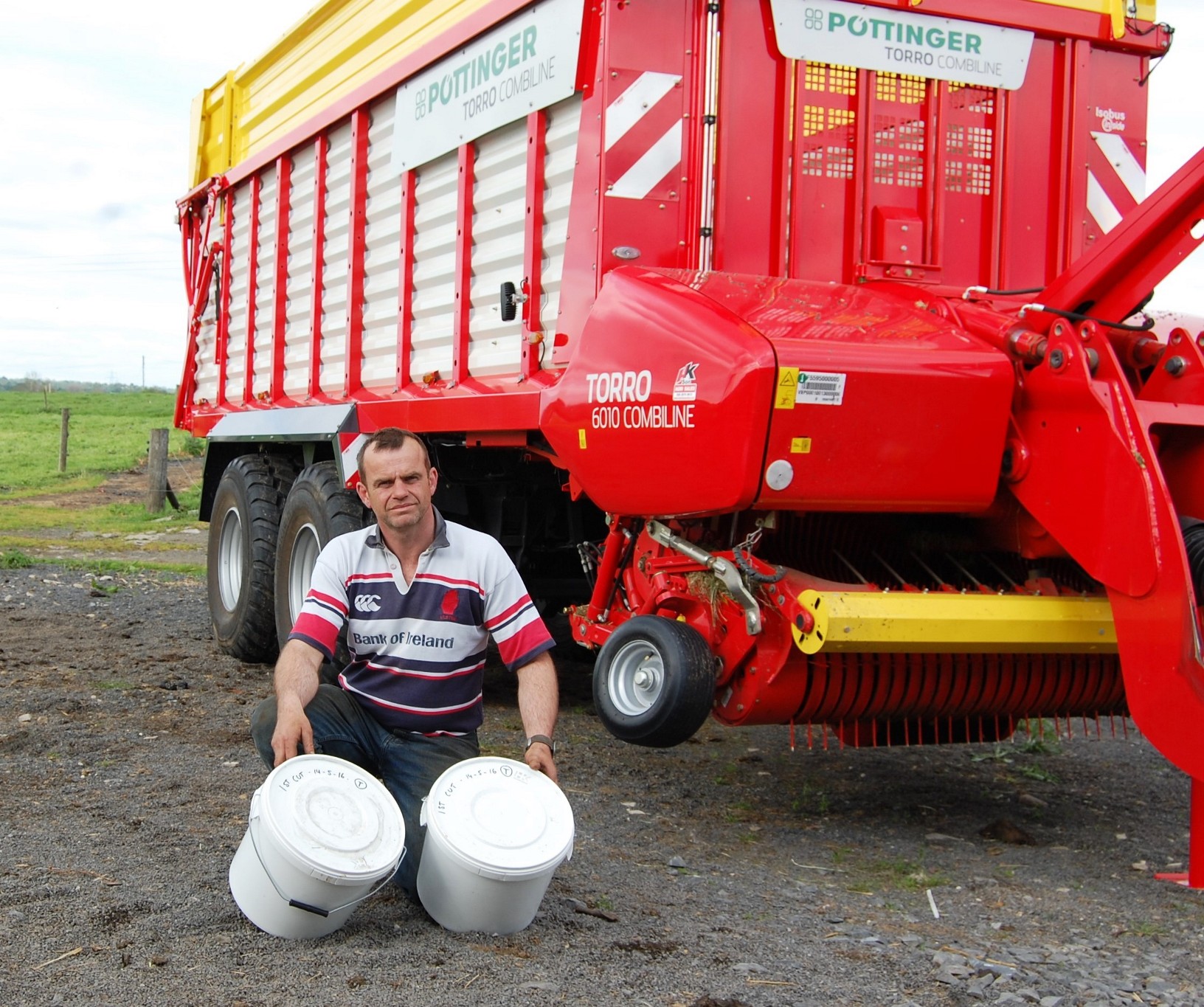Co Armagh milk producer Dean Wright believes in having his silage operation made as scientific a process as possible.
“This approach gives me the best chance of having the greatest amount of control over what is a very complex process. Cutting date, weather and a host of other factors come into play when it comes to determining the quality of the silage that comes out of the pit come feeding time.”
For the past number of years Dean has used Provita’s Advance+ inoculant on all his silage crops. But it was only, when he had the opportunity of taking part in a mini silo test, that he actually got a very clear idea of just how effective the product can be.
With the assistance of Provita’s Tommy Armstrong, several mini silos – filled with treated and untreated grass – were produced in 2014 and 2015.
“The samples were taken from the same part of a particular field,” Dean explained.
“In that way the grass samples were as identical as they could possibly be.
“The silos were sealed and then opened at the beginning of December. Provita co-ordinated the analysis of both forages. The difference in the quality of the two silages was more than significant. The treated forage was superior on all counts.
“In fact, I knew the instant the silos were opened this would be the case.”
This year Dean took a first cut of 120 acres during Balmoral Show week. The ground had been grazed by sheep during the winter months, following which it received a dressing of slurry. Subsequent to this the fertiliser programme was completed with Dean spreading a combination of nitro chalk and sulphur.
“We had decided to change our entire silage making operation this year,” Dean explained.
“The purchase of a mower and Pottinger forage wagon gives us more control over the entire process. And this is no reflection at all on the contractor that we had previously been using. His team had done a tremendous job for us over many years.”
Dean is estimating a grass yield over the first cut area of between 7t and 7.5t per acre.
“We were very happy with this level of output,” he confirmed.
“The grass was wilted for 36 hours and then ensiled. As was the case in 2015, we made mini silos of treated and untreated forage. So it will be interesting to see how they turn out come December.”
Tommy Armstrong from Provita commented, “Many farmers like Dean are now targeting more production from forage, most dairy farmers can target 3000 to 4000 litres from forage. This takes some planning and commitment but if done right it will improve efficiency. Using our Advance+ silage inoculant will help achieve this.”
